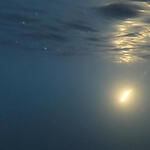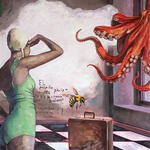Keita Miyazaki
Bio
Keita Miyazaki (*1983; Tokyo, Japan) lives and works between Tokyo and London. Miyazaki studied at Tokyo University of the Arts, Japan (2013-2015) and at the Royal College of Art, UK (2011- 2013). He also completed a PhD in craft metal casting in Tokyo. During the summer 2017 Miyazaki was the selected Artist in of the Vannucci Artist Residency in Città della Pieve (Italy). His work has been presented in numerous shows in UK and Japan, including the Victoria and Albert Museum and the Daiwa Foundation in London. In 2015 a monumental work by Miyazaki was selected for Sculpture in the City exhibition in London. His works were presented in the exhibition ‘After the Deluge’, at Palazzo Sant’Apollonia during the Venice Biennale 2017. In July 2018 he presented his works at Galleria le Prigioni, Treviso, part of the Benetton Collection.
His works are part of numerous private collections in the UK, Japan, USA, Switzerland and UAE. Museum and corporate collections include; Daiwa Foundation, Mori Arts Centre Japan, Aoyama Spiral Hall Japan, Ogi Kankou Ltd, Sado Island, Niigata Prefecture Japan, Mortimer Collection London. Miyazaki presented his works at the Palais De Tokyo in June 2018 as part of the exhibition ‘Childhood | Another Banana Day for the Dream Fish’.
Statement
Miyazaki’s decade-long study of traditional metal casting led him to see car engines as a great formal and conceptual avenue to consider contemporary society and the impact of capitalism. Miyazaki welds sections of discarded car engines into untellable forms, evoking novel organisms born in the afterlife of a global economy. Brightly colored layers of paper and felt—folded in pleats, honeycombs and fans—emerge from the metal pipes like flowers budding in spring simulating a whimsical grove of new species evolved from the fallout of radiation and pollution. A reminder of the cathartic power of beauty and poetry in the face of social unrest.
Información adicional
Miyazaki’s decade-long study of traditional metal casting led him to see car engines as a great formal and conceptual avenue to consider contemporary society and the impact of capitalism. Miyazaki welds sections of discarded car engines into untellable forms, evoking novel organisms born in the afterlife of a global economy. Brightly colored layers of paper and felt—folded in pleats, honeycombs and fans—emerge from the metal pipes like flowers budding in spring simulating a whimsical grove of new species evolved from the fallout of radiation and pollution. A reminder of the cathartic power of beauty and poetry in the face of social unrest.











